Reducing Bioaerosol Emissions and Exposures in the Performing Arts: A Scientific Roadmap for a Safe Return from COVID19
Background
The Centers for Disease Control and Prevention (CDC) advocates maintaining six feet from others to prevent the spread of Coronavirus Disease 2019 (COVID-19); however, this is based on expected airborne particles emitted during regular breathing.
Performance artists are more likely to display forced-air breathing (i.e., singing, playing musical instruments or dancing, among other artistic expressions), which is more like sneezing and coughing. While data is lacking, there is developing consensus that infectious aerosolized particles containing SARS-CoV-2, the virus that causes COVID-19 are partly responsible for global spread. According to one recent study, the transmission distance of SARS-CoV-2 may be more than 13 feet (https://doi.org/10.3201/eid2607.200885).
Unfortunately, many infected individuals do not realize they are infected; and group activities such as choir, dance, acting, or instrument ensembles increase the risk of spread. Solutions are needed to reduce the risk of viral spread during performances and group practice settings.
Headed by a multi-disciplinary team of leading researchers at Colorado State University, this proposal aims to quantify the problem and more importantly, identify mitigating strategies to reduce infectious spread.
Team
Scientific Advisory Board
The Facilities at Colorado State University

Simulated
Environmental Testing (SET) facility
The Powerhouse Energy Campus contains a unique, simulated environmental testing (SET) facility for studying human aerosol emissions and exposures in a clean, versatile environment. The SET facility is one of only a handful like it in the world and has advanced capabilities to measure and analyze aerosolized particles. Data are automatically recorded by a custom-built computer control and data acquisition system. In addition, the Volckens research group houses over $2M in sophisticated aerosol research equipment for the determination of aerosol size, concentration, and chemical composition.
Objective
The goal of this research is to reduce the risk of human exposure and co-infection during performing arts events and rehearsals.
The specific objectives of this project are to:
- Understand aerosol release and distance traveled during heavy breathing, movement, vocalization (singing & acting), and playing a range of instruments.
- Identify solutions to reduce aerosol release and spread while artists perform their craft.
- Develop guidance documents that can be used across a range of artistic disciplines
Impact
This project will provide a robust, scientifically rigorous dataset to develop solutions addressing aerosol spread during artistic performances. Findings will inform guidelines aimed at reducing risks to artists for use by performing arts national and international governance bodies.
Major Supporters:
Lead Supporters:
- American Bandmasters Association Foundation
- American Choral Directors Association
- American Guild of Organists
- Auburn University
- Big Ten Band Directors Foundation
- Chorus America
- Colorado State University School of Music, Theatre, and Dance
- Mill City Church
- National Band Association
- University of Kentucky
- Wenger Corporation
Supporters:
- Association of Concert Bands
- Conn-Selmer
- O'ahu Band Directors Association
- Texas A&M University Bands
- Gayle Treber
- Women Band Directors International Foundation
Valued Donors:
- Richard C. and Toni C. Atkinson
- Susan Baker
- Lisa Baldwin
- Eleanor D. Barrett and Margaret E. Cottam
- William and Stephanie Barth
- David Betz and Lynn Scott
- Douglas Boyer
- Aubree Brasser
- Myra Brown
- Beatrice Chetard
- Jennifer Clippert
- College Orchestra Directors Association
- Colorado Flute Association
- Tim and Wendi Davis
- Ann R. Donoghue
- Don and Cynthia Dotson
- Mark Douglass
- Nick and Amy Drabik
- Anonymous
- Catherine Flannery
- Flute Plus
- Jim and Julie Gatesman
- Elena Georgieva
- David Hahn
- Utah Hamrick
- Cindy Haraway
- Leslie Harrington
- Jennifer L. Holz and Georgia Peeples
- Karen L. Howat
- Ryan Hyde
- Nancy Jianakoplos
- George and Laura G. Jones
- Richard Kellogg
- Harry W. Kenney and Leslie L. Stewart
- Evan Key
- William Kingren
- Robert A. and Lisa G. Kreutz
- Ira Kroll
- Fred W. Jacobs and Jennifer Clary
- Arthur T. and Sheri L. Linnell
- Manchester Choral Society
- National Catholic Band Association
- Megan S. Miller
- Randy D. Moench and Emily H. Thurston-Moench
- Tim Oliver
- Karen Olsen and Guada Bautista
- Jan Opalach
- Douglas and Kathleen M. Payne
- Edward and Laura Piechota
- Flute Plus
- Janet M. Puckett
- David W. and Louann Reid
- Randy Rosette
- Greg and Jane Sandstrom
- Molly Sayles
- Belinda and Elisa Shreckengost
- Craig E. and Lorraine L. Shuler
- Peter R. and Linda E. Sommer
- Lisa Soo
- Erin Spencer
- Steven T. and Kellie A. Sponberg
- Cary C. Stewart
- Susquehanna Chorale
- Steven and Monica Szalaj
- Adam A. Torres and Michael Schreier
- Gayle Treber, '71, '87
- Theodore and Malia Van Rooy
- Kirsten Wells
- Nina Zheng
Your Gift
Your contribution will immediately provide for:
- Salary for project staff (one graduate student, one postdoc, one research scientist)
- Research supplies
- Calibration and maintenance of equipment
- Open access publication fees (to make the data/results freely accessible)


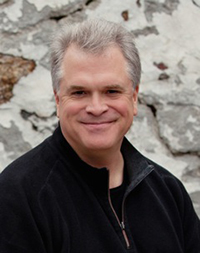 Dan Goble is the director of the School of Music, Theatre and Dance at Colorado State University. Dr. Goble served as the dean of the School of Visual and Performing Arts at Western Connecticut State University in Danbury, Conn., where for 21 years his leadership roles also included chair of the Department of Music and coordinator of Jazz Studies. During his tenure at Western Connecticut State University (WCSU), Dr. Goble provided leadership for curricular and programmatic changes that affected positively the School of Visual and Performing Arts (SVPA) and the university, most notably the planning and construction of an award-winning $97 million instructional and performance facility, which opened in 2014
Dan Goble is the director of the School of Music, Theatre and Dance at Colorado State University. Dr. Goble served as the dean of the School of Visual and Performing Arts at Western Connecticut State University in Danbury, Conn., where for 21 years his leadership roles also included chair of the Department of Music and coordinator of Jazz Studies. During his tenure at Western Connecticut State University (WCSU), Dr. Goble provided leadership for curricular and programmatic changes that affected positively the School of Visual and Performing Arts (SVPA) and the university, most notably the planning and construction of an award-winning $97 million instructional and performance facility, which opened in 2014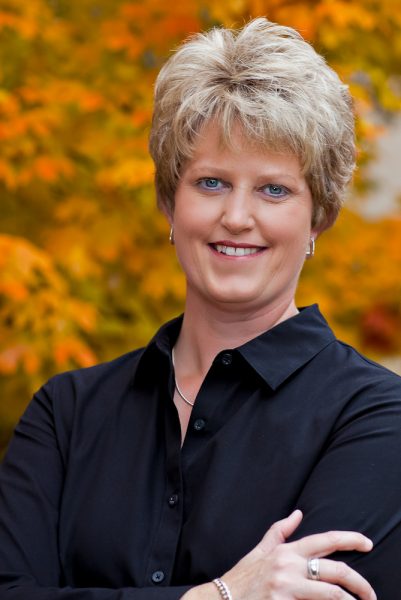 Rebecca Phillips is professor of music and director of bands at Colorado State University where she conducts the CSU Wind Symphony and guides all aspects of the band and graduate wind conducting program. She has served as a guest-conductor and clinician, throughout North America, Europe, and Asia. Dr. Phillips regularly conducts collegiate honor bands, all-state bands, and festival bands across the United States, Canada, and Europe and she has been a rehearsal clinician at the Midwest Clinic: An International Band and Orchestra Conference. In June 2020, she will be President of the National Band Association and is currently the Music Education chair of the College Band Directors National Association. She was selected for membership in the prestigious American Bandmasters Association in 2014.
Rebecca Phillips is professor of music and director of bands at Colorado State University where she conducts the CSU Wind Symphony and guides all aspects of the band and graduate wind conducting program. She has served as a guest-conductor and clinician, throughout North America, Europe, and Asia. Dr. Phillips regularly conducts collegiate honor bands, all-state bands, and festival bands across the United States, Canada, and Europe and she has been a rehearsal clinician at the Midwest Clinic: An International Band and Orchestra Conference. In June 2020, she will be President of the National Band Association and is currently the Music Education chair of the College Band Directors National Association. She was selected for membership in the prestigious American Bandmasters Association in 2014.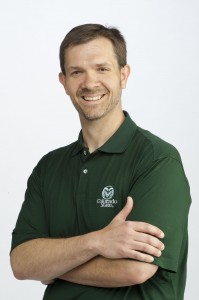 Charles Henry is a professor of Chemistry and Chemical and Biological Engineering. Dr. Henry’s research interests lie broadly in the development of lab-on-a-chip technologies, to study environmental and biological phenomena. Major techniques used include microfabrication, chromatography, electrochemistry, electrophoresis, microfluidics, microscopy, and 3D printing. Dr. Henry has published over 180 peer-reviewed publications, generated eight patents, and is an associate editor for Analytica Chimica Acta. In addition, Dr. Henry has been involved in five spin-out companies from Colorado State University with products ranging from industrial water quality sensors to low-cost environmental diagnostics.
Charles Henry is a professor of Chemistry and Chemical and Biological Engineering. Dr. Henry’s research interests lie broadly in the development of lab-on-a-chip technologies, to study environmental and biological phenomena. Major techniques used include microfabrication, chromatography, electrochemistry, electrophoresis, microfluidics, microscopy, and 3D printing. Dr. Henry has published over 180 peer-reviewed publications, generated eight patents, and is an associate editor for Analytica Chimica Acta. In addition, Dr. Henry has been involved in five spin-out companies from Colorado State University with products ranging from industrial water quality sensors to low-cost environmental diagnostics.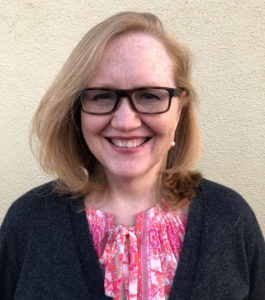 Heather Pidcoke is the chief medical research officer and associate director of research at the Translational Medicine Institute at Colorado State University. She received her Doctor of Medicine from the University of Southern California Keck School of Medicine, has a Master of Science in Clinical Investigation, and a Ph.D. in Physiology from the University of Texas, Health Science Center, San Antonio. Pidcoke has industry experience with clinical development projects and has been recognized on a national level for her contributions in advancing medical research for military personnel. She received the Presidential Early Career Award for Scientists and Engineers from the White House Office of Science and Technology Policy in 2016.
Heather Pidcoke is the chief medical research officer and associate director of research at the Translational Medicine Institute at Colorado State University. She received her Doctor of Medicine from the University of Southern California Keck School of Medicine, has a Master of Science in Clinical Investigation, and a Ph.D. in Physiology from the University of Texas, Health Science Center, San Antonio. Pidcoke has industry experience with clinical development projects and has been recognized on a national level for her contributions in advancing medical research for military personnel. She received the Presidential Early Career Award for Scientists and Engineers from the White House Office of Science and Technology Policy in 2016.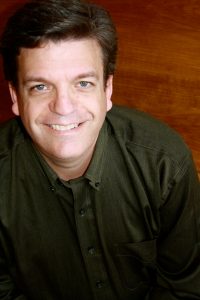 Allen Henderson holds degrees from Carson Newman College (B.M.), The University of Tennessee (M.M.) and the College-Conservatory of Music at the University of Cincinnati (D.M.A.), where his minor was in Arts Administration and he was winner of the prestigious Corbett-Treigle Opera Competition.
Allen Henderson holds degrees from Carson Newman College (B.M.), The University of Tennessee (M.M.) and the College-Conservatory of Music at the University of Cincinnati (D.M.A.), where his minor was in Arts Administration and he was winner of the prestigious Corbett-Treigle Opera Competition.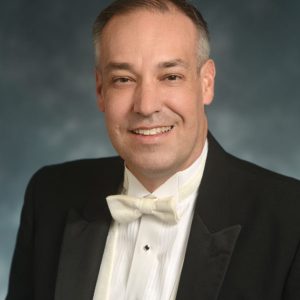 Dr. Timothy B. Rhea is director of bands and music activities at Texas A&M University. As director of bands, he serves as administrative head of the university band program (1000 students), serves as conductor of the University Wind Symphony, and is the director of the nationally famous “Fightin’ Texas Aggie Band.” As director of performing ensembles, he additionally oversees the activities of the jazz ensemble, orchestra, and choral programs.
Dr. Timothy B. Rhea is director of bands and music activities at Texas A&M University. As director of bands, he serves as administrative head of the university band program (1000 students), serves as conductor of the University Wind Symphony, and is the director of the nationally famous “Fightin’ Texas Aggie Band.” As director of performing ensembles, he additionally oversees the activities of the jazz ensemble, orchestra, and choral programs.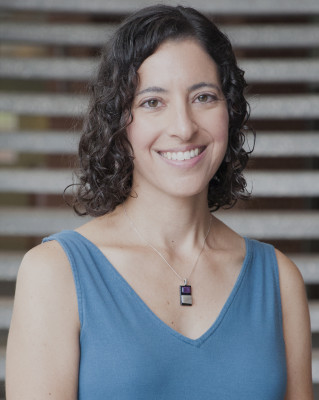 Emily Morgan is a teacher, dancer, and choreographer. Her training is eclectic, largely rooted in Cunningham technique and postmodern release-based technique and complimented by her study of Limón, Graham, and Klein techniques, as well as ballet, kathak, capoeira, yoga, and other forms. She has performed with members of Lower Left Performance Collective in Texas and New Mexico, with Sebastian Prantl in Krems, Austria, Daniel Ashwanden in Vienna, Austria, in work in New York by Stephan Koplowitz and Ellen Cornfield, and in work in North Carolina by Sarah Council, Ashwini Gogate, Ann Dils, Martha Connerton, Jan van Dyke, and BJ Sullivan. Her choreography has been shown in North and South Carolina, Indiana, Florida, Texas, Louisiana, Maryland, New Mexico, and California. Emily’s research is situated in community dance practices and interactive/participatory dance in traditional and non-traditional spaces. This encompasses many other research interests: dance created by and for community members, site-specific dance, and interdisciplinary and/or collaborative performance and pedagogy. She has presented her written and creative research at conferences and festivals throughout the United States and internationally in Mexico, Austria. and Barbados. Emily has taught modern dance, improvisation, choreography, history, world dance forms, ballet, and dance pedagogy, among others. She has taught at Winthrop University, the University of Texas, El Paso, El Paso Community College, University of North Carolina, Greensboro, Elon University, the North Carolina Governor’s School, and at a public magnet arts high school in Winston-Salem, North Carolina. Emily holds an M.F.A. in Dance/Choreography from the University of North Carolina, Greensboro, a B.A. in Dance from Denison University in Ohio, and is a doctoral student in dance at Texas Woman’s University.
Emily Morgan is a teacher, dancer, and choreographer. Her training is eclectic, largely rooted in Cunningham technique and postmodern release-based technique and complimented by her study of Limón, Graham, and Klein techniques, as well as ballet, kathak, capoeira, yoga, and other forms. She has performed with members of Lower Left Performance Collective in Texas and New Mexico, with Sebastian Prantl in Krems, Austria, Daniel Ashwanden in Vienna, Austria, in work in New York by Stephan Koplowitz and Ellen Cornfield, and in work in North Carolina by Sarah Council, Ashwini Gogate, Ann Dils, Martha Connerton, Jan van Dyke, and BJ Sullivan. Her choreography has been shown in North and South Carolina, Indiana, Florida, Texas, Louisiana, Maryland, New Mexico, and California. Emily’s research is situated in community dance practices and interactive/participatory dance in traditional and non-traditional spaces. This encompasses many other research interests: dance created by and for community members, site-specific dance, and interdisciplinary and/or collaborative performance and pedagogy. She has presented her written and creative research at conferences and festivals throughout the United States and internationally in Mexico, Austria. and Barbados. Emily has taught modern dance, improvisation, choreography, history, world dance forms, ballet, and dance pedagogy, among others. She has taught at Winthrop University, the University of Texas, El Paso, El Paso Community College, University of North Carolina, Greensboro, Elon University, the North Carolina Governor’s School, and at a public magnet arts high school in Winston-Salem, North Carolina. Emily holds an M.F.A. in Dance/Choreography from the University of North Carolina, Greensboro, a B.A. in Dance from Denison University in Ohio, and is a doctoral student in dance at Texas Woman’s University.